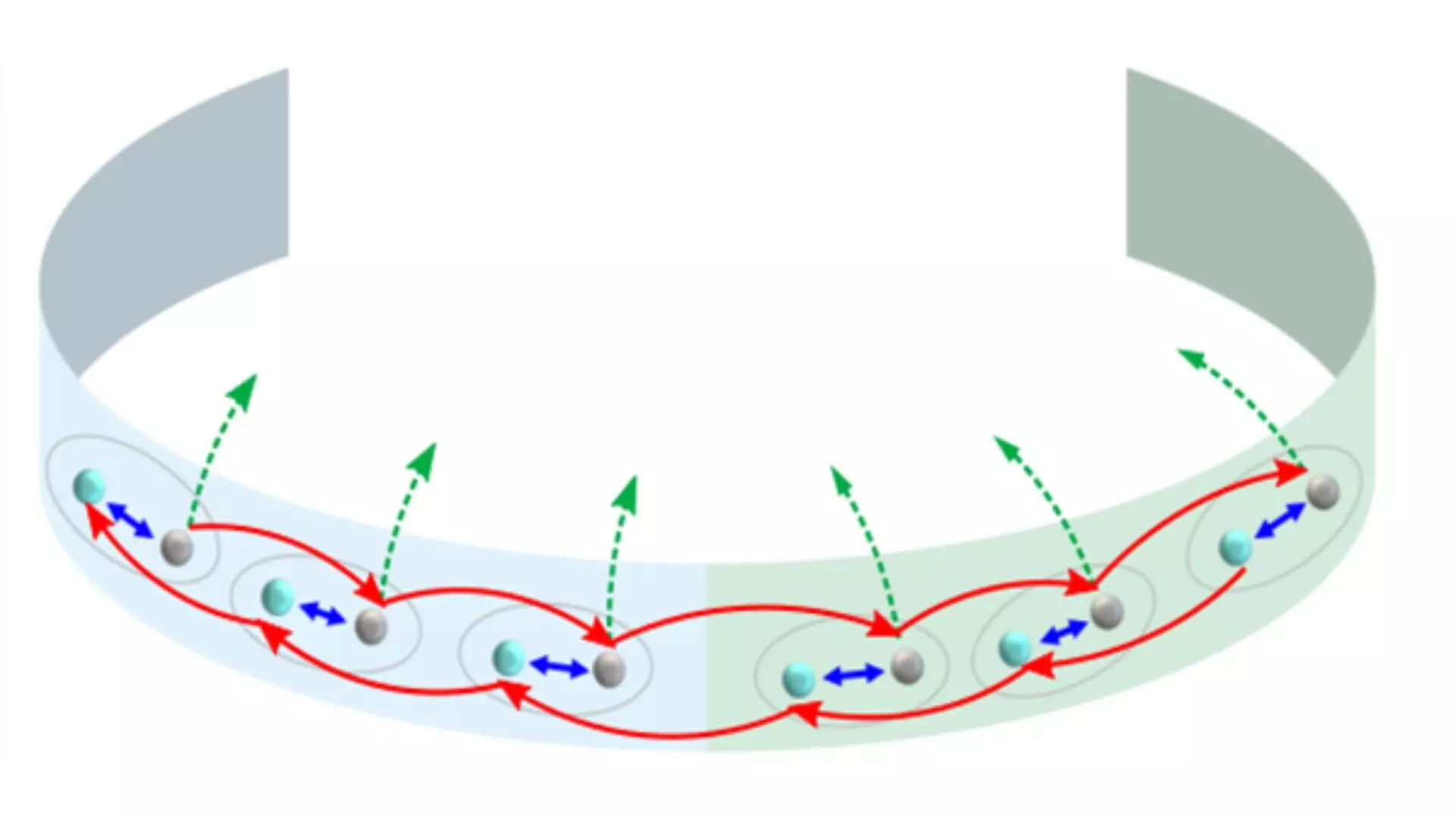The unfolding world of quantum dynamics has recently witnessed a significant breakthrough, as highlighted by a new study published in Physical Review Letters. Researchers have made the groundbreaking experimental observation of non-Hermitian edge bursts, which could reshape our understanding of quantum systems. Non-Hermitian physics stands apart from traditional Hermitian frameworks, primarily due to the complex nature of its eigenvalues. This distinction offers insights into phenomena that occur in systems where processes such as energy dissipation or external interactions come into play. The revelation addresses critical aspects of real-world systems that can exhibit behavior like boundary localization—vital for advancements in both photonics and condensed matter physics.
At the heart of this experimental study is the non-Hermitian skin effect (NHSE), a term coined by one of the co-authors, Prof. Zhong Wang. The NHSE describes how eigenstates in a non-Hermitian environment tend to gather at the edges rather than distributing evenly through the bulk, a remarkable deviation from the expected behaviors of Hermitian systems. Prof. Wei Yi and Prof. Peng Xue from prestigious Chinese institutions underscored that their motivation stemmed from the NHSE’s intriguing properties, particularly its capacity to reveal novel dynamic phenomena underscored by boundary sensitivity. This work is particularly timely due to the growing interest in non-Hermitian systems within scientific communities as researchers aim to explore the broader implications of NHSE on the properties of quantum devices and materials.
To delve into the dynamic behavior of NHSE, the researchers employed a sophisticated photonic quantum walk setup. They designed a one-dimensional quantum walk scenario, where the movement of photons is dictated by quantum coin flips, a method that introduces a stochastic element to the process. By dividing the system with a wall, creating two distinct regions with differential rules, the researchers were well positioned to observe quantum phenomena during photon transmission. Utilizing optical devices like beam splitters and wave plates, they created conditions to facilitate an analysis into photon loss at the system’s boundary.
Their focus on real-time dynamics marks a pivotal shift from previous studies that primarily chronicled static characteristics. This exploration allows for critical insights into how the properties of non-Hermitian systems evolve when exposed to continuous external conditions or internal fluctuations.
The findings from this study are illuminating, as the researchers confirmed the existence of non-Hermitian edge bursts under specific conditions: the NHSE and a closed imaginary gap in the energy spectrum. Such dual requirements highlight the fascinating interplay between the system’s static properties and its dynamic evolution. They significantly illustrated that when certain initial conditions are met—where photons begin their journey—photon loss at the boundary is pronounced.
Moreover, the study emphasizes the surprising influence of initial positioning, where photons initiated further from the edge exhibited lesser probabilities of experiencing photon loss. This experimentation facilitated a comprehensive mapping of edge burst phenomena, corroborating the hypothesis tied directly to boundary interactions and time evolution.
This experimental breakthrough not only enhances our understanding of non-Hermitian systems but also paves the way for prospective applications in various fields, including quantum sensing and localized light harvesting. Prof. Wang expressed optimism about the research’s prospects, suggesting that the spatial and spectral characteristics of edge bursts would serve as vital tools for scientific inquiry.
Similarly, Prof. Xue accentuated the groundwork laid by this study to further investigate the elaborate real-time dynamics within non-Hermitian topological frameworks. The researchers are optimistic that additional universal scaling laws may emerge from this expanded exploration of non-Hermitian systems, revealing further intricate relationships between quantum mechanics and boundary effects.
The experimental demonstration of non-Hermitian edge bursts marks a pivotal moment in quantum physics, shedding light on the unique dynamics associated with such systems. By revealing the foundational dynamics at boundaries, this study opens new avenues for research and practical applications in the realm of quantum technologies and beyond. As investigations into non-Hermitian systems progress, we stand on the precipice of unlocking richer insights into quantum mechanics that could redefine various scientific and technological landscapes. The exploration of these dynamic phenomena holds the potential to revolutionize our comprehension of the quantum world.

